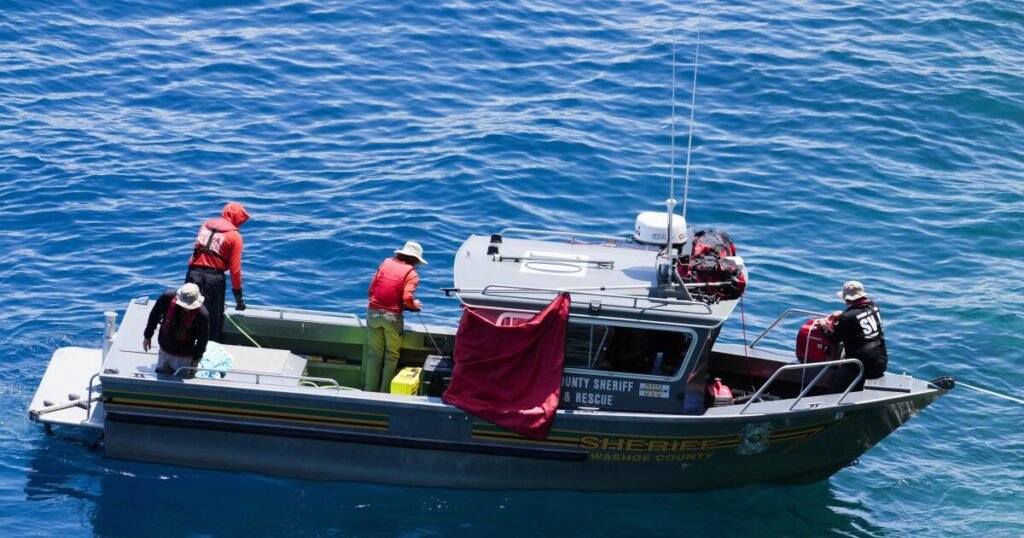Tips for Boating at Lake Tahoe
Tahoe City – Today, I want to share some boating safety tips for Lake Tahoe and really, for any body of water.
This isn’t my usual column; I typically delve into California politics and government. But after reading about a tragic accident in Tahoe that resulted in eight fatalities on June 21st, I felt compelled to shift gears.
With July 4th around the corner, we’re right in the middle of boating season. California boasts about 4 million recreational boats, according to the state’s Boat and Waterways department, with an average of 514 boat accidents each year. July is typically the worst month for incidents.
I’ve been boating on Lake Tahoe for 55 years now—well, I’ve been around the water since I was a teenager, really.
So here are a few of my basic rules for enjoying boats up to about 30 feet long. My own boat is usually around 22-24 feet.
First off, if you notice the winds at Lake Tahoe are already hitting 10 mph, even before noon, think twice about going out in a recreational powerboat. The winds can make the water much choppier in the afternoon.
If you see whitecaps forming, it’s a good hint to head for shore.
And if there are a lot of larger yachts in the vicinity, it might be time to get off the water.
Also, be cautious with what manufacturers claim about boat capacity. They often embellish. If a boat is rated for 10 people, it’s best to consider eight as a maximum.
Sure, you could fit 10, but the added weight increases the risk of riding lower in the water, which could let waves in, leading to potential capsizing. Plus, extra passengers moving around can throw off the balance and make steering trickier.
Most importantly, always check the weather forecast before heading out.
Lake Tahoe is magnificent, stretching 22 miles long and 12 miles wide, sitting at 6,224 feet in the Sierra Mountains. It holds enough water to cover California by 14 inches. Interestingly, two-thirds of the lake is in California, while a third sits in Nevada.
The weather can be unpredictable. While one end might see fierce winds and storms, the other could be calm with clear skies.
It’s worth noting that many of the troubles stemmed from a sudden storm that hit the southern and western shores last Saturday afternoon.
The severity of the storm caught many off guard—north winds created waves up to 8 feet and winds reaching 45 mph. Sure, predictions were in the teens and twenties, which should have served as a warning for boaters to steer clear of the water.
One person who stood out after the tragedy was Mary Laub, a retiree from Minden, Nevada. She lives on a hill in South Lake Tahoe and keeps a 26-foot cabin cruiser at Tahoe Keys. Mary always checks the weather forecast.
She had plans to cruise that Saturday, but decided against it after seeing the forecasts.
“When the wind gets to around 10 mph, I won’t go out before noon,” she mentioned. “If there’s even a hint of wind, I stay off the water. I’ve been caught out there before. It’s not worth the risk.”
The boat involved in the accident was a new 27-foot cruiser, and it was only the third time it had been in the water. It had ten passengers, family and friends, in their 60s and 70s, celebrating a woman’s 71st birthday—she was among the deceased.
They were returning home from Emerald Bay when an 8-foot swell swamped the boat, shutting down the engines and capsizing it near Rubicon Point close to DL Bliss State Park. Many were thrown into the cold waters, likely incapacitated by hypothermia.
Fortunately, a mother and daughter wearing life jackets were rescued by Washoe County Sheriffs. It remains unclear if the others were also wearing life jackets.
Meanwhile, reports indicated that boats along the southwest coast were damaged or torn from their moorings and were pushed onto rocks and beaches, often colliding with others.
Four crew members on a 24-foot Mastercraft wisely donned life jackets, abandoned the boat, and swam to safety along exposed rocky areas.
I reached out to meteorologist Dawn Johnson at the National Weather Service in Reno.
She stated that the afternoon winds were forecasted to be around 25 mph, with gusts hitting 20 mph. There was also a 25% chance of thunderstorms. “If thunderstorms are predicted, make sure to get out of the water,” Johnson said. “You’re at a high risk of being struck by lightning in open water.”
She recalled that strong winds had already hit on Friday night, but by Saturday morning, they had dropped to 5-10 mph, only to pick up later on.
“We often experience gusts across the lake of that magnitude, and we probably saw those winds in the afternoon,” she explained. “Sustained winds can reach 25-30 mph.”
Yet, she noted that such conditions usually produce waves of only 2-4 feet, adding, “We’re still figuring out what happened.” In my view, those 4-foot waves can feel like a hurricane.
And remember, nature doesn’t care about boating plans on weekends.
















